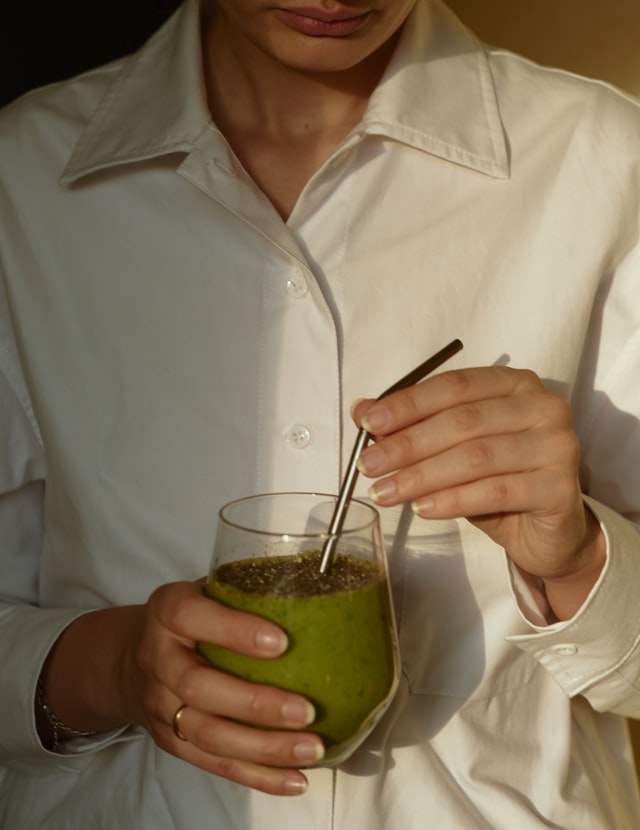


When we think of superfoods we commonly think of berries, dark leafy greens, and wine to name a few. Do you know what they all have in common? Quercetin. Without knowing it, you have most likely ingested this bioactive plant compound in the form of red onions, capers, cruciferous vegetables, berries, and grains. According to this review, quercetin is one of the most widely distributed and extensively studied flavonoid that’s found in various food sources. Quercetin has various biological properties including antioxidant, anti-inflammatory, antibacterial, antiviral, radical-scavenging, gastroprotective, and immune-modulatory activities.
What is Quercetin?:
Quercetin is a type of flavonoid which is present in a variety of fruits, vegetables, grains, nuts, tea, and wine. It’s one of the most bountiful antioxidants in the diet and plays a critical role in assisting your body to combat free radical damage that is linked to an array of chronic diseases.
What Does it Do?:
Much like all flavonoids, quercetin is an antioxidant. Antioxidants help forage and offset free radicals that might otherwise expedite aging, assist inflammation, and sustain a range of chronic diseases from cancer to heart disease. All of which plays a massive role in immune health. Quercetin is a vital gut health nutrient that serves a multitude of functions, including and not limited to the ability to support good gut flora as a prebiotic, immune health, and its antiviral properties. It can also help vitamin C harmoniously prevent over-activation of mast cells, which emit histamine when the body is distressed. Quercetin is a zinc ionophore; think of it as a zinc transport molecule, which helps penetrate zinc absorption further into the body’s cells. When supplementing with zinc, be sure to pair it with an ionophore like quercetin to maximize the effects. Quercetin, zinc, vitamin C, and vitamin D are starting to be studied closely for potential preventative care for Covid-19.
Properties / Benefits:
May Reduce Inflammation:
Research shows that copious amounts of free radicals induce genes that promote inflammation. Persistent inflammation is associated with severe health problems. In test-tube studies, quercetin reduced inflammation markers in human cells. In another study that included 50 women with rheumatoid arthritis found that participants who took 500mg of quercetin experienced significantly less early morning stiffness, less overall pain, and reduced after-activity pain.
May Lower Allergy Symptoms:
Another potential benefit to quercetin’s anti-inflammatory properties is lessened allergy symptoms.
In test-tube and animal studies, quercetin has been shown to block enzymes involved in inflammation and histamine suppression.
Anticancer Properties:
Research suggests that due to quercetin’s antioxidant properties, it may have cancer-fighting benefits. In this study, quercetin was found to suppress cell growth and induce cell death in prostate cancer cells.
May Reduce Brain Disorders:
Quercetin is also thought to help protect against degenerative brain disorders, such as Alzheimer’s disease and dementia.
May Reduce Blood Pressure:
In this study, a review in 580 people found that taking more than 500mg of quercetin in supplement form daily helped reduce systolic and diastolic blood pressure by an average of 5.8mm Hg and 2.6mm Hg.
Quercetin is also responsible for helping prevent aging, has exercise performance effects and can aid in blood sugar control.
Quercetin Rich Foods:
Now that we’ve discussed what quercetin is and its beneficial properties it’s important to know where it’s most abundant. Quercetin is found in many plant-rich foods, especially in the outer layer or peel. Below are some of the highest sources of quercetin. For a full list, refer here.
・Capers
・Bell Peppers (green and yellow)
・Red Onion (Raw)
・Lovage Leaves
・Red Leaf Lettuce
・Buckwheat
・Red Apples
・Grapes
・Kale
・Broccoli
・Tomatoes
・Cherries
・Almonds
・Pistachios
・Asparagus (Cooked)
・Brussels Sprouts
・Cranberries
・Blueberries
・Raspberries
・Elderberry
・Green Tea
・Black Tea
Furthermore:
Quercetin is a pretty outstanding nutrient for overall wellness since it supports immunity and has incredible antioxidant properties. Though food sources are abundant for this nutrient, it can be difficult eating more than 100mg of it daily. So if you’re looking to up your immunity, consider supplementing with it; an average dose is 500-1,000mg. If you do add this to your supplement routine, be sure to take it with vitamin C as there are synergistic effects. Lastly, always consult with your physician before trying new supplements, as there could be medication reactions that can potentially come up.
スーパーフードについて考えるとき、私たちは一般的にベリー、濃い葉物野菜、ワインなどを思い浮かべます。 皆さんはそれらすべてに共通するものを知っていますか? それはケルセチンです。 それを知らずに、あなたはおそらく今までこの生物活性植物化合物を赤玉ねぎ、ケッパー、アブラナ科の野菜、ベリー、そして穀物から摂取したでしょう。このレビューによると、ケルセチンは、さまざまな食品源に含まれ最も広く分布し、広く研究されているフラボノイドの1つです。 ケルセチンには、抗酸化作用、抗炎症作用、抗菌作用、抗ウイルス作用、ラジカル消去作用、胃の保護作用、免疫調節作用など、さまざまな生物学的特性があります。
ケルセチンとは何ですか?:
ケルセチンは、さまざまな果物、野菜、穀物、ナッツ、お茶、ワインに含まれるフラボノイドの一種です。 これは食事療法で最も豊富な抗酸化物質を含む物の1つであり、一連の慢性疾患に関連するフリーラジカルによる損傷と戦うために身体を助ける上で重要な役割を果たします。
それは何をするためのものか?:
すべてのフラボノイドと同じように、ケルセチンは抗酸化物質です。抗酸化物質は、成長を促進し、炎症を助け、癌から心臓病までのさまざまな慢性疾患を維持するフリーラジカルを探し出し、相殺するのに役立ちます。これらはすべて免疫の健康に大きな役割を果たしています。ケルセチンは、プレバイオティクス、免疫の健康、およびその抗ウイルス特性としての良好な腸内細菌叢をサポートする能力を含み、多くの機能を果たす重要な腸の健康栄養素です。また身体が苦しんでいるときにビタミンCが、ヒスタミンを放出する肥満細胞の過剰な活性化を調和的に防ぐのに役立ちます。ケルセチンは亜鉛イオノフォアです。亜鉛の吸収を体の細胞にさらに浸透させるのに役立つ亜鉛輸送分子と考えてください。亜鉛を補給するときは、効果を最大化するために、ケルセチンのようなイオノフォアと組み合わせてください。ケルセチン、亜鉛、ビタミンC、およびビタミンDは、Covid-19の潜在的な予防的ケアについて綿密に研究され始めています。
性質・利点:
炎症を軽減する可能性があります:
研究によると、大量のフリーラジカルが炎症を促進する遺伝子を誘発します。 持続的な炎症は深刻な健康問題に関連しています。試験管研究では、ケルセチンはヒト細胞の炎症マーカーを減少させました。 関節リウマチの女性50人を対象とした別の研究では、500mgのケルセチンを服用した参加者は、早朝のこわばり、全体的な痛みが大幅に軽減されました。
アレルギー症状を軽減する可能性があります:
ケルセチンの抗炎症特性のもう1つの潜在的な利点は、アレルギー症状の軽減です。試験管と動物の研究では、ケルセチンは炎症とヒスタミン抑制に関与する酵素をブロックすることが示されています。
抗がん作用:
研究によると、ケルセチンの抗酸化作用がガンと戦う効果がある可能性があります。この研究では、ケルセチンが前立腺癌細胞の細胞増殖を抑制し、細胞死を誘発することがわかりました。
脳障害を軽減する可能性があります:
ケルセチンは、アルツハイマー病や認知症などの変性脳障害からの保護にも役立つと考えられています。
血圧を下げる可能性があります:
この研究では、580人のレビューで、サプリメントの形で500mgを超えるケルセチンを毎日摂取すると、収縮期血圧と拡張期血圧が平均で5.8mmHgおよび2.6mmHg低下することがわかりました。
ケルセチンはまた、老化を防ぎ、運動パフォーマンス効果があり、 血糖コントロールを助けることができます。
ケルセチンリッチフード:
ケルセチンとは何か、そしてその有益な特性について説明したので、ケルセチンが最も豊富に含まれている物を知る事が重要です。ケルセチンは、多くの植物、特に外層や皮に含まれています。以下はケルセチンの最高の供給源のいくつかです。 完全なリストについては、こちらを参照してください。
・ケイパー
・ピーマン(緑と黄色)
・赤玉ねぎ(生)
・ラベージ(セリ科のハーブ)の葉
・レッドリーフレタス
・そば
・レッドアップル
・ブドウ
・ケール
・ブロッコリー
・トマト
・さくらんぼ
・アーモンド
・ピスタチオ
・アスパラガス(調理済み)
・芽キャベツ
・クランベリー
・ブルーベリー
・ラズベリー
・ニワトコ
・緑茶
・紅茶
さらに:
ケルセチンは、免疫力をサポートし、信じられないほどの抗酸化特性を持っているため、全体的な健康のための非常に優れた栄養素です。 この栄養素は豊富に含まれていますが、1日100mg以上食べるのは難しいかもしれません。したがって、免疫力を高めたい場合は、それを補うことを検討してください。 平均用量は500-1,000mgです。 これをサプリメントルーチンに追加する場合は、相乗効果があるため、必ずビタミンCと一緒に摂取してください。最後に、新しいサプリメントを試す前に必ず医師に相談してください。薬の反応が起こる可能性があるためです。